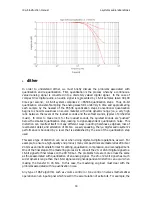
rdq-6 instruction manual
z-systems audio laboratories
7
The rdq-6 allows you to set different output wordwidths and dither settings for each of its
three processor cards so that you can use different DACs for each channel pair. The majority
of DACs today use 20-bit digital-to-analog chips as their core conversion technology; hence,
we tend to recommend the 20-bit dithered output as the most useful across the broadest
spectrum of source material and DACs today. If you are using the rdq-6 with the z-systems
rdac-6, you can take advantage of the full 24-bit output. As 24-bit converters and 24-bit
digital filter chips become more commonplace, we will recommend the 24-bit output setting
for other devices.
F
IGURE
6
How to do it. To select which dither mode is used by the rdq-6, press the
system
button and
select the
WORD
submenu. The display will appear as shown in Figure 6. To change which
dither mode is used, simply rotate the knob below the dither selection display for each of the
three processor cards. Pressing the button underneath
BACK
will take you to the system
menu and pressing the button underneath
EXIT
will take you to the normal operating mode
.
•
volume control
The analog volume control is a potential source for noise and coloration. Nonetheless, most
of us are willing to live with these problems in light of the other problems that life without a
volume control would cause! The rdq-6 features a digital-domain volume control and offset
facility which is utterly neutral tonally. This control allows you to apply b12 dB of
boost and -95 dB of cut to the incoming digital signal and an offset b12 dB of boost
and -95 dB of cut to every channel with respect to the left front channel. You may have heard
arguments that digital-domain volume control is undesirable because it leads to loss of
resolution. This may be true for poorly implemented digital volume controls but certainly is
not the case for the rdq-6. Remember the discussion of dither: we can achieve resolution well
below the least significant bit. This is the key to the rdq-6’s digital volume control (please
refer to appendix B for a more detailed explanation).








































